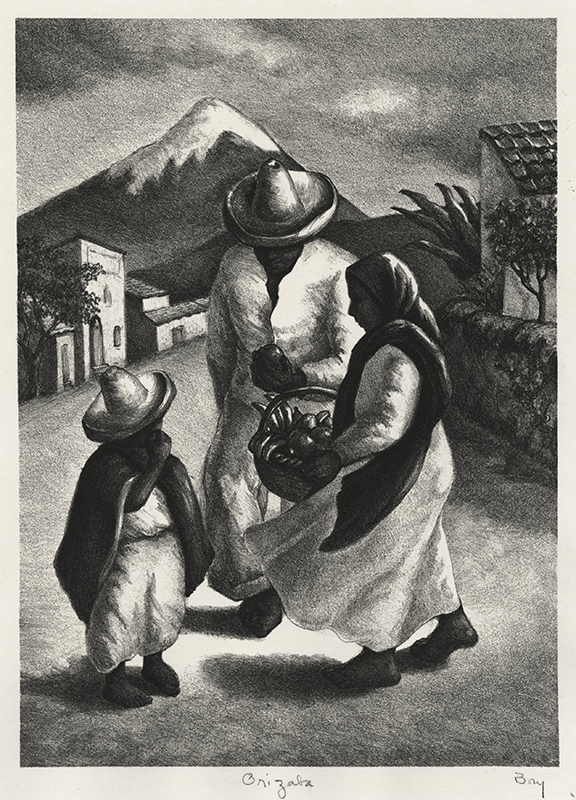
19th, 20th & 21st Century Fine Prints
707-546-7352 · fax 707-546-7924 · web: www.annexgalleries.com · email: artannex@aol.com
Orizaba by Edith Bry

Orizaba
Edith Bry
Title
Orizaba
Artist
Edith Bry
1898 - 1991 (biography)Year
1944
Technique
lithograph
Image Size
12 5/16 x 8 13/16" image size
Signature
pencil signed "Bry" in lower right
Edition Size
ca 250
Annotations
pencil titled
Reference
AAA587
Paper
light ivory wove
State
published
Publisher
Associated American Artists (AAA)
Inventory ID
24706
Price
$400.00
Description
This scene is of a Mexican family from the city of Orizaba, Veracruz, Mexico. Bry frequently revisited the themes of family and of the lives of everyday people, especially before the Second World War. Here, a father and mother watch over their son who samples fruit from their market basket. The boy's cloak, the mother's windswept skirt, and a distant snow-laden peak of the Sierra Madre Oriental suggest a wintery afternoon, but the scene is tender and warm nonetheless. The image was published and printed by AAA (Associated American Artists) in 1944 in an edition of around 250.


